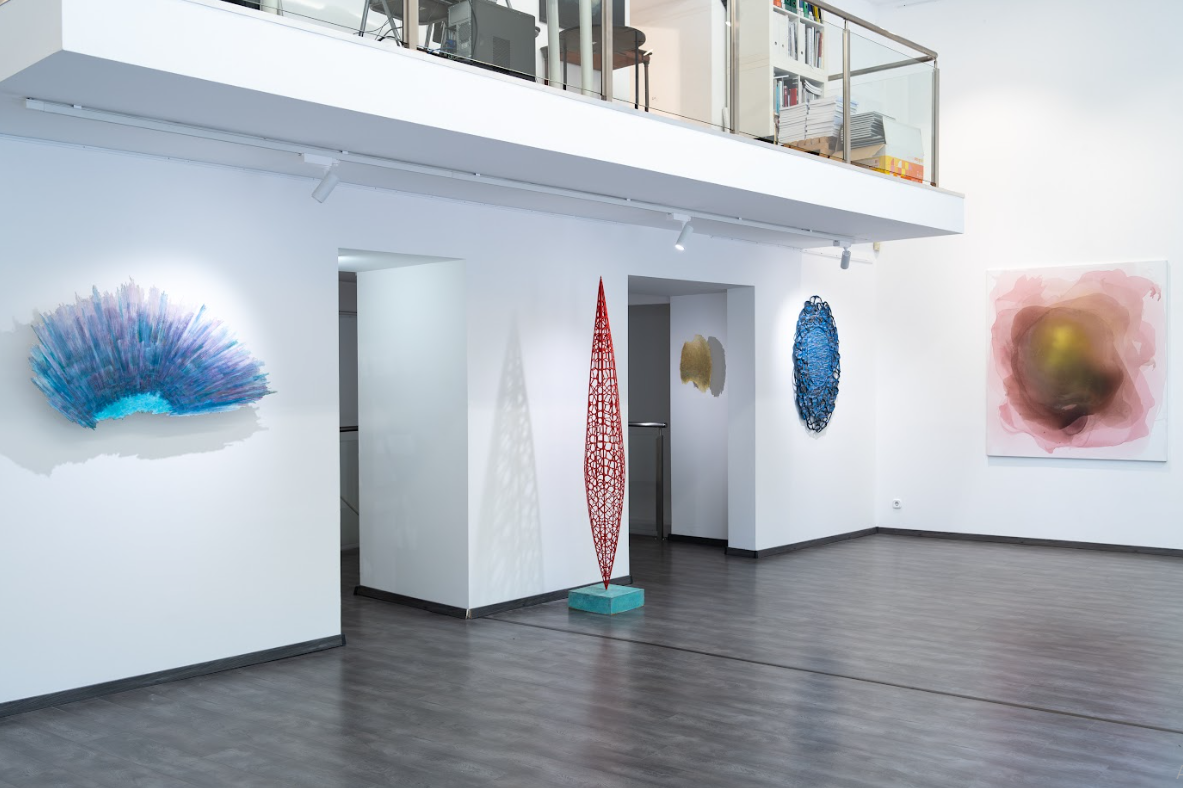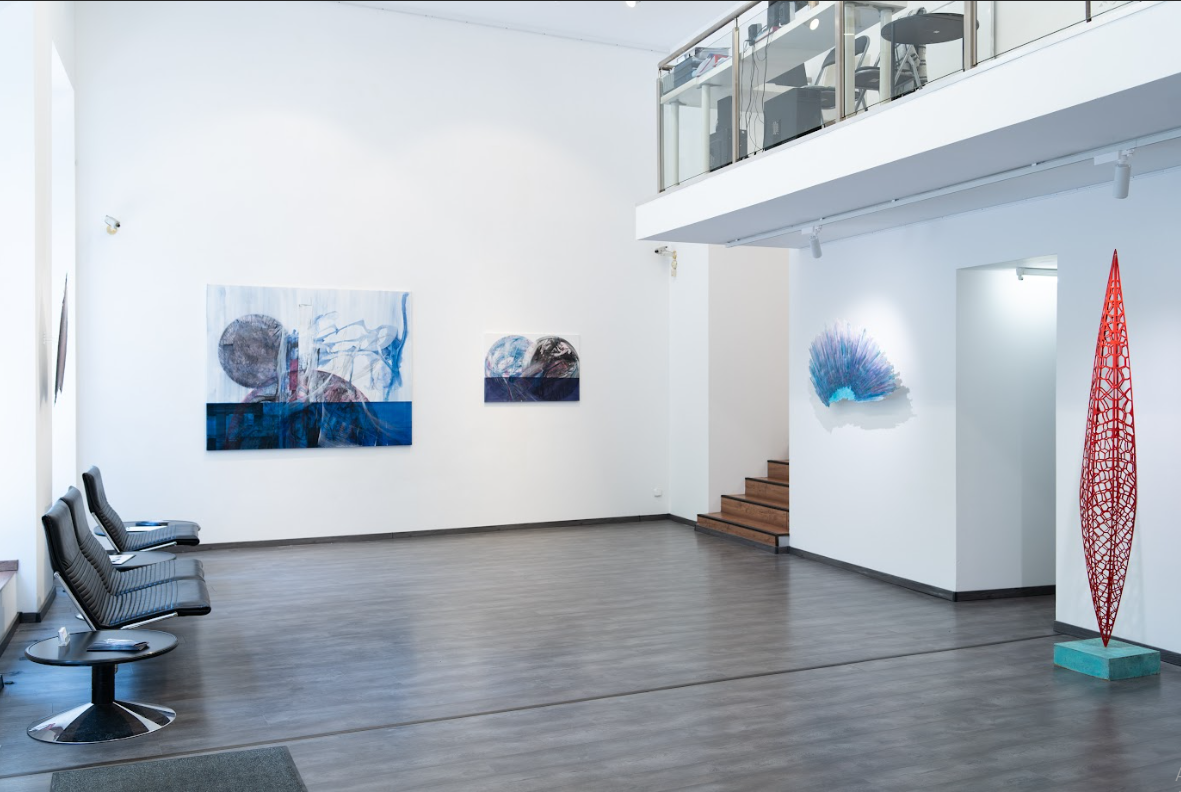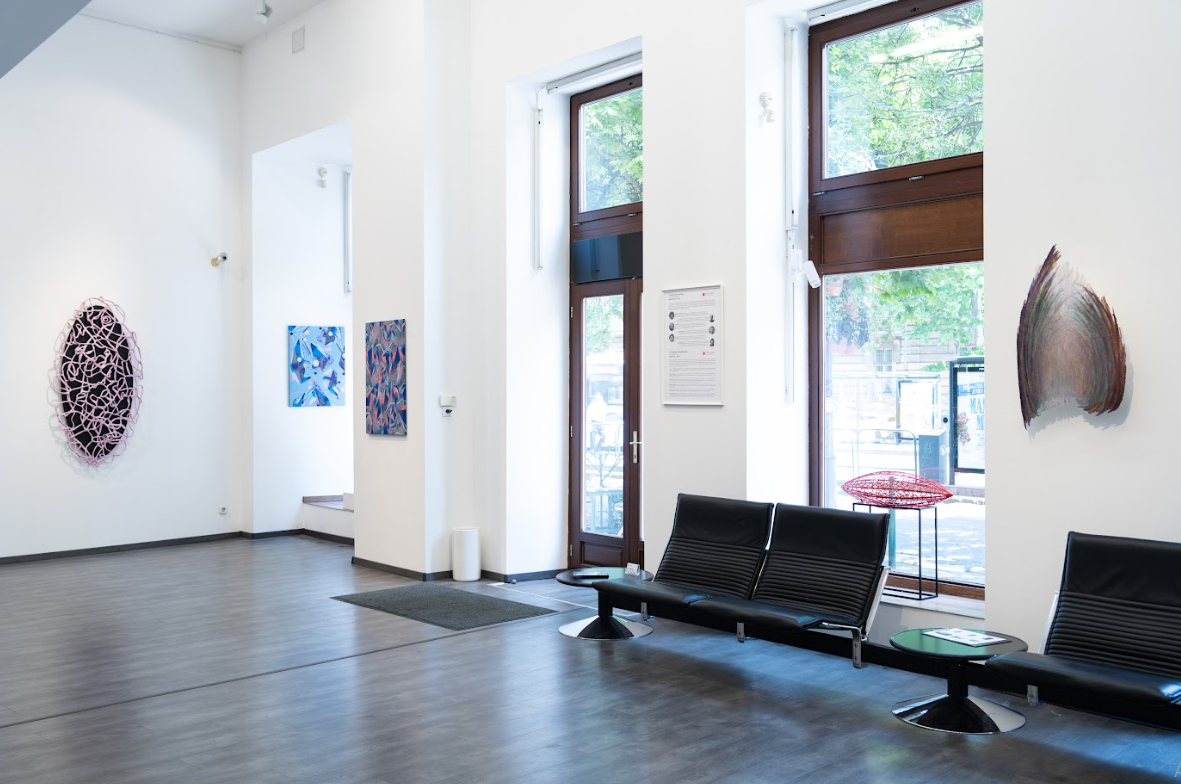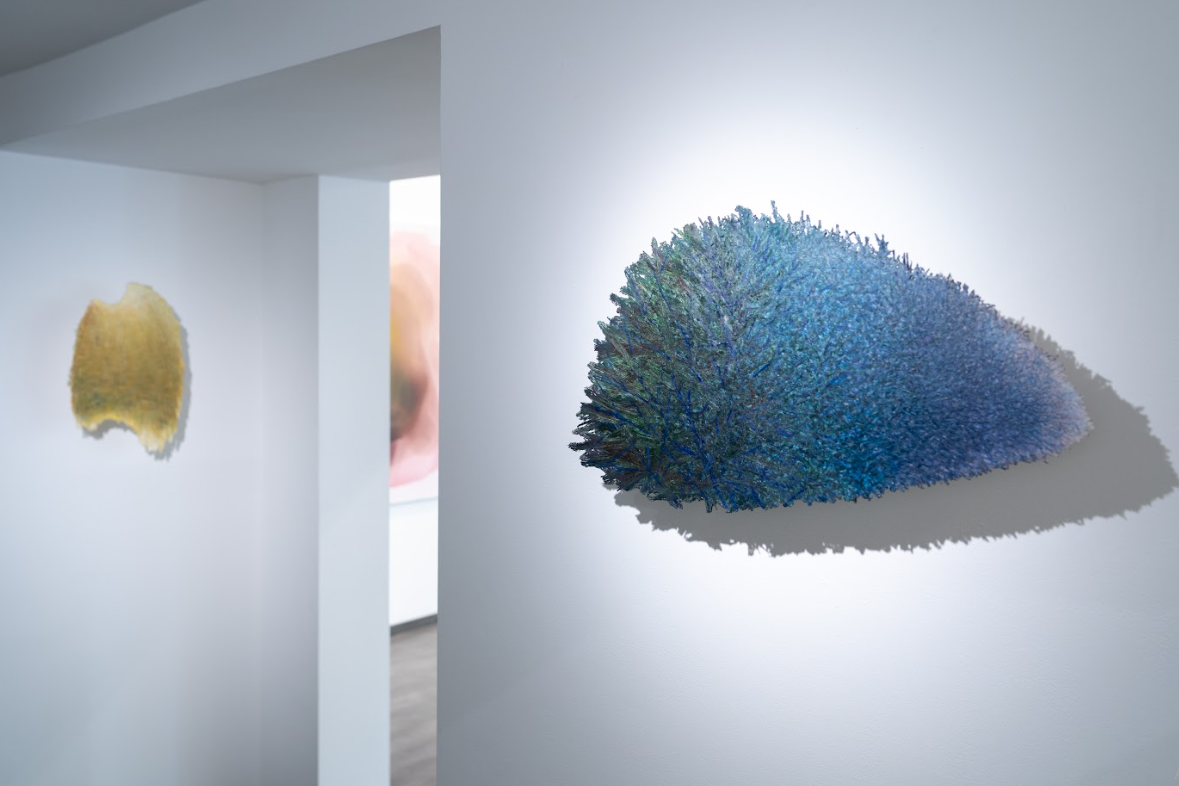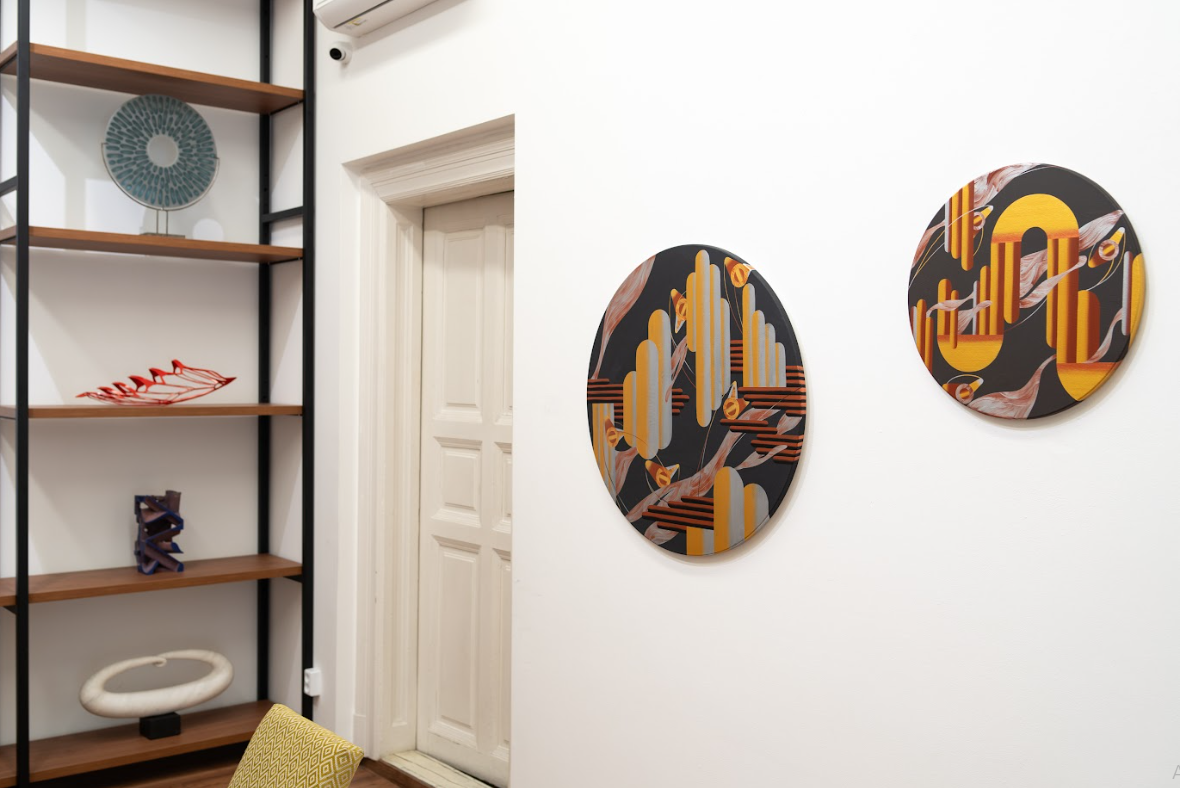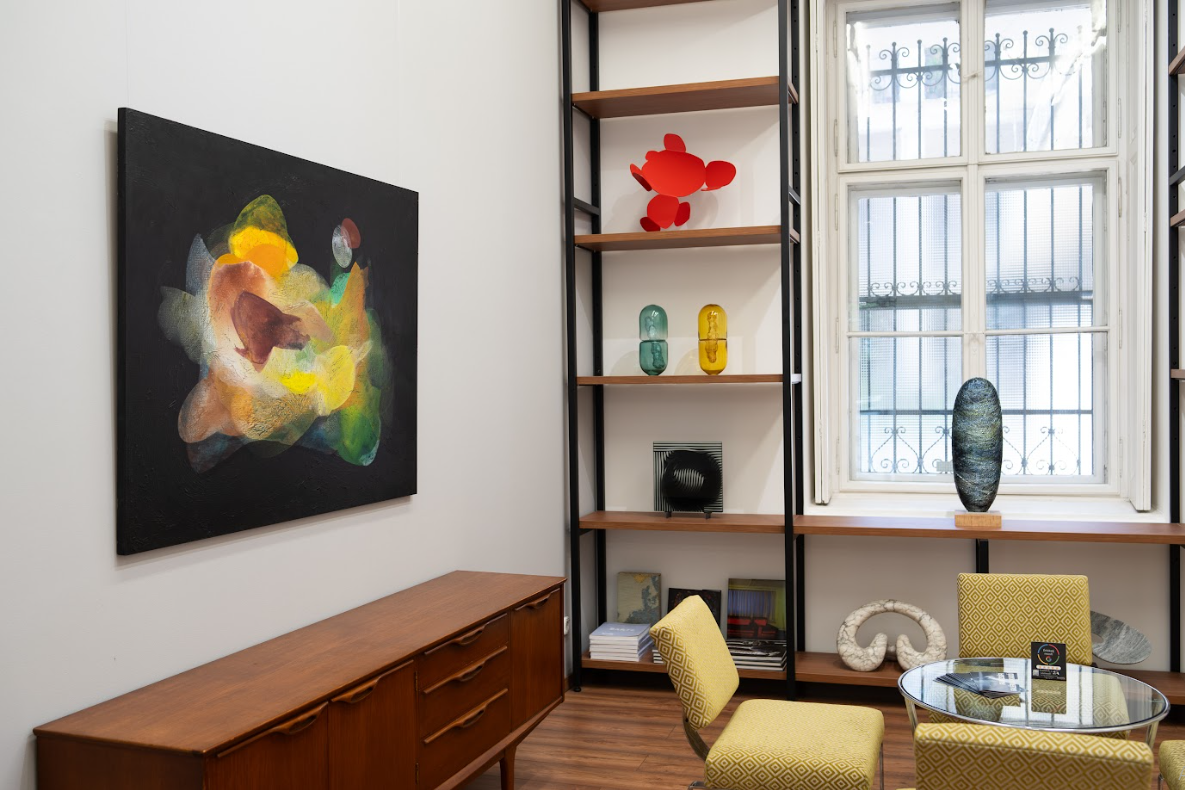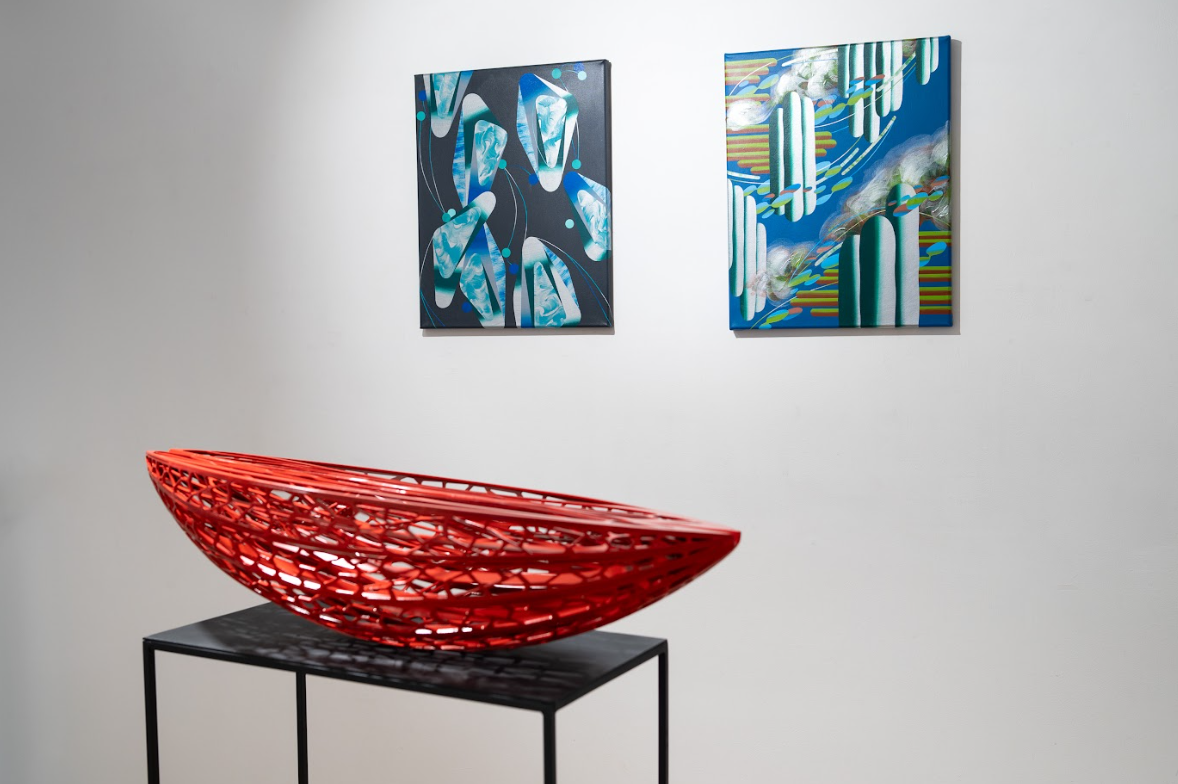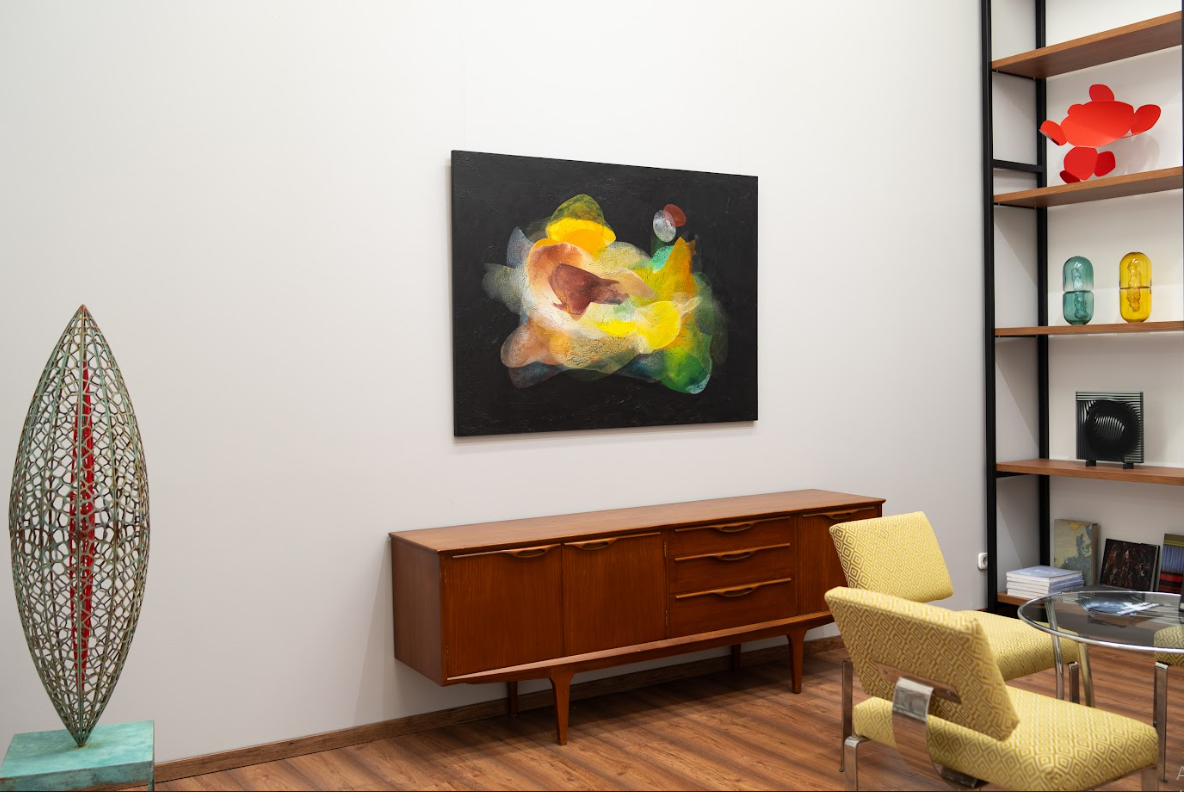The Aesthetics of Weightlessness
group exhibition
Lightness, levitation, transparency, dissolution.
Bodies freed from the law of gravity, lightened materials, forms that appear weightless, mist-like, translucent, swirling layers of paint, waves and shapes extending into infinity—all evoking the sensation of lifting off the canvas, of shifting and floating.
To float, a body’s density must equal that of the surrounding liquid, resulting in a perfect balance of forces. In a metaphorical sense, abstract forms—“bodies”—float within the “liquid” density of the canvas or space. This state speaks of lightness, unfolding in a physical medium that detaches itself from everyday reality.
The exhibition "The Aesthetics of Weightlessness" is a visual experiment on how mass and gravity can be dissolved through the mediums of art—here, through concrete, carbon, and metal sculptures, canvas paintings, and object-like artworks. By reinterpreting the aesthetic and conceptual dimensions of lightness, weightlessness emerges not only in the physical sense: floating structures and perforated materials create a new kind of sensual presence.
Nóra Szirmai explores the delicacy and lightness of insect wing structures and the veining of drying leaves, paralleling these with the manipulation of steel. Through her sculptures, she makes visible and tangible the often-hidden connections, systems, and networks.
Ferenc Csurgai’s geometric-organic concrete forms stand in space on the edge between stability and displacement, evoking a fragile balance. “Csurgai is a master of reduction, absence, and emptiness.” (Ildikó D. Udvari)
In contrast to concrete, his carbon fiber works are materially lighter, more pliable, and seem to “hover” away from the wall surface—offering a radically new dimension in contemporary sculpture in both material and visual terms.
Áron Gábor’s characteristically painterly style, enriched with strong graphic elements, also defines his Part and Whole series. He transposes the inner world of the human being—the formal and conceptual systems of proportion that occupy his thoughts—onto the canvas. Instead of uniform surfaces, we encounter swirling, meticulous, organic patterns and semi-transparent fields. Measured geometric shapes meet naturally flowing, organic “process diagrams,” both competing and cooperating to find a balanced harmony. (Ferenc Domokos)
Márton Romvári’s latest series, Fluidity, represents a new direction in his painting. While spatial construction remains central to his work, the compositions now consist of airy, fluid blotches and mist-like forms rather than tiny shapes. The vertically layered bright, sometimes shimmering paint spots appear as spatial sculptures against a dark background.
Tomasz Piars’ abstract paintings are characterized by the collision of dimensions and forms, vibration, constant motion, and dynamic flow. His latest series depicts a “Simulated Reality,” not by transferring existing structures from the real world into his visual space, but by constructing a self-invented system, a synthetic world governed by its own laws. His two- and three-dimensional, organic and geometric elements seem to layer upon one another in near-weightlessness.
Bálint Miksa’s works completely transcend the physical constraints of the frame, becoming abstract compositions that evoke a floating effect.
“His paintings are energy fields—sometimes exploding, sometimes pulling inward, at other times pushing, spinning, propelling. To achieve this, he applies thousands of tiny brushstrokes onto the surface; these colorful gestures build upon and next to each other, creating structures that offer different visual experiences from up close and from afar. Then comes the moment of birth—the paintings burst from their shell, and, with a little guidance, find their place in the world as they float.” (Katalin T. Nagy)
The exhibiting artists: CSURGAI Ferenc, GÁBOR Áron, MIKSA Bálint, Tomasz PIARS, ROMVÁRI Márton, SZIRMAI Nóra

